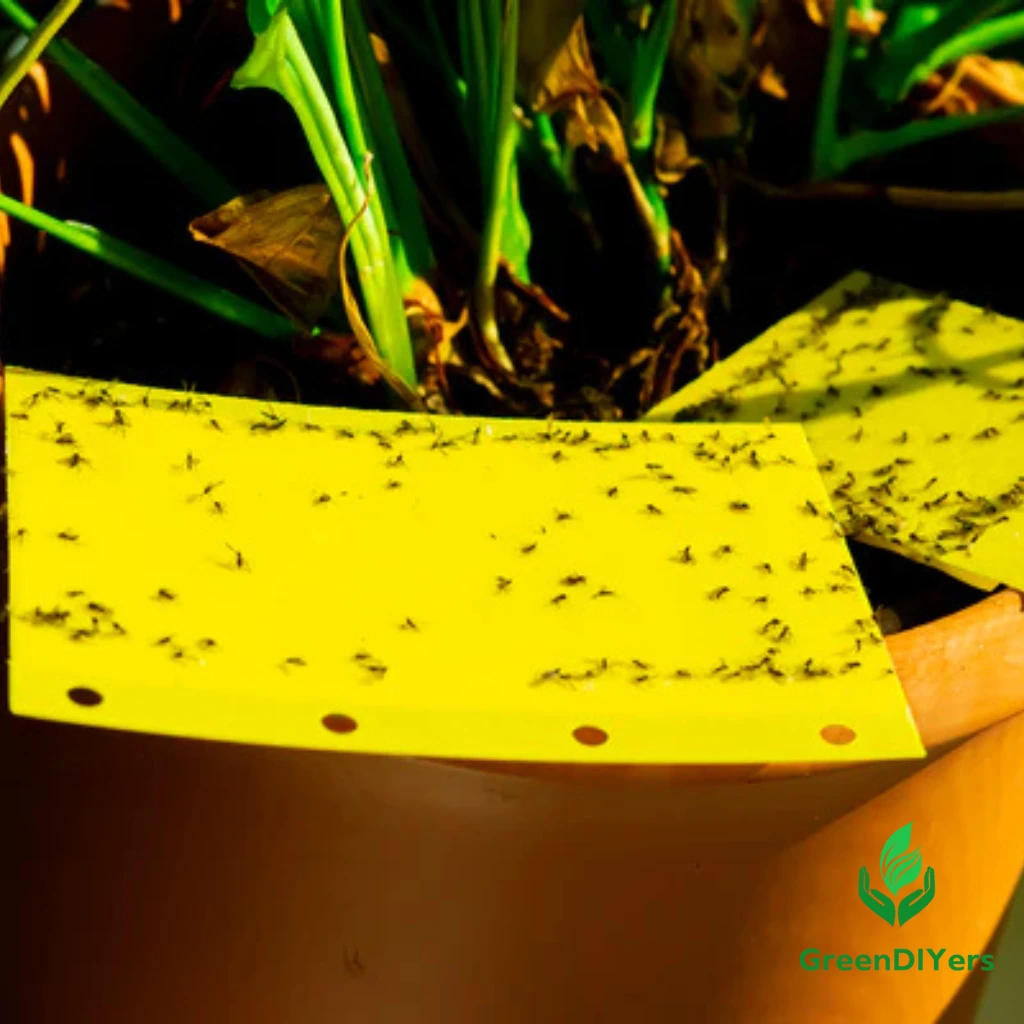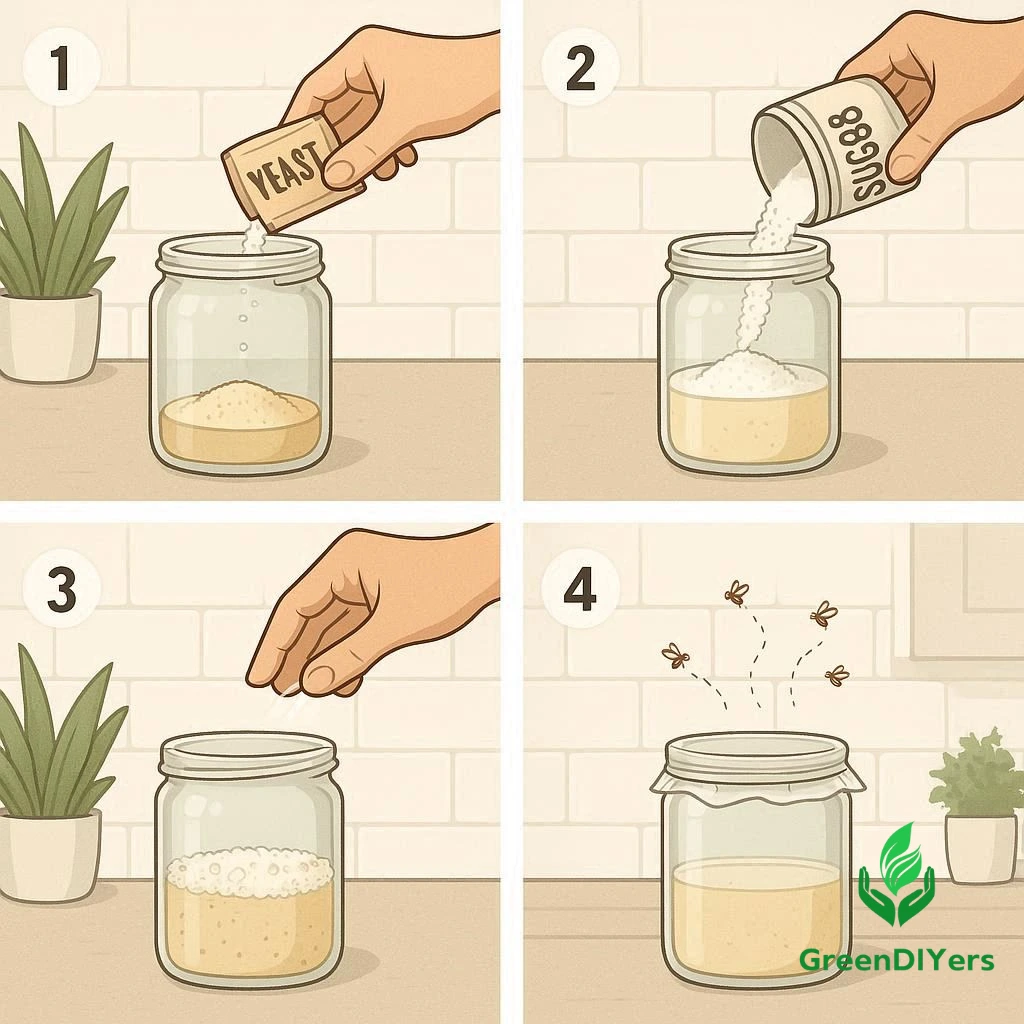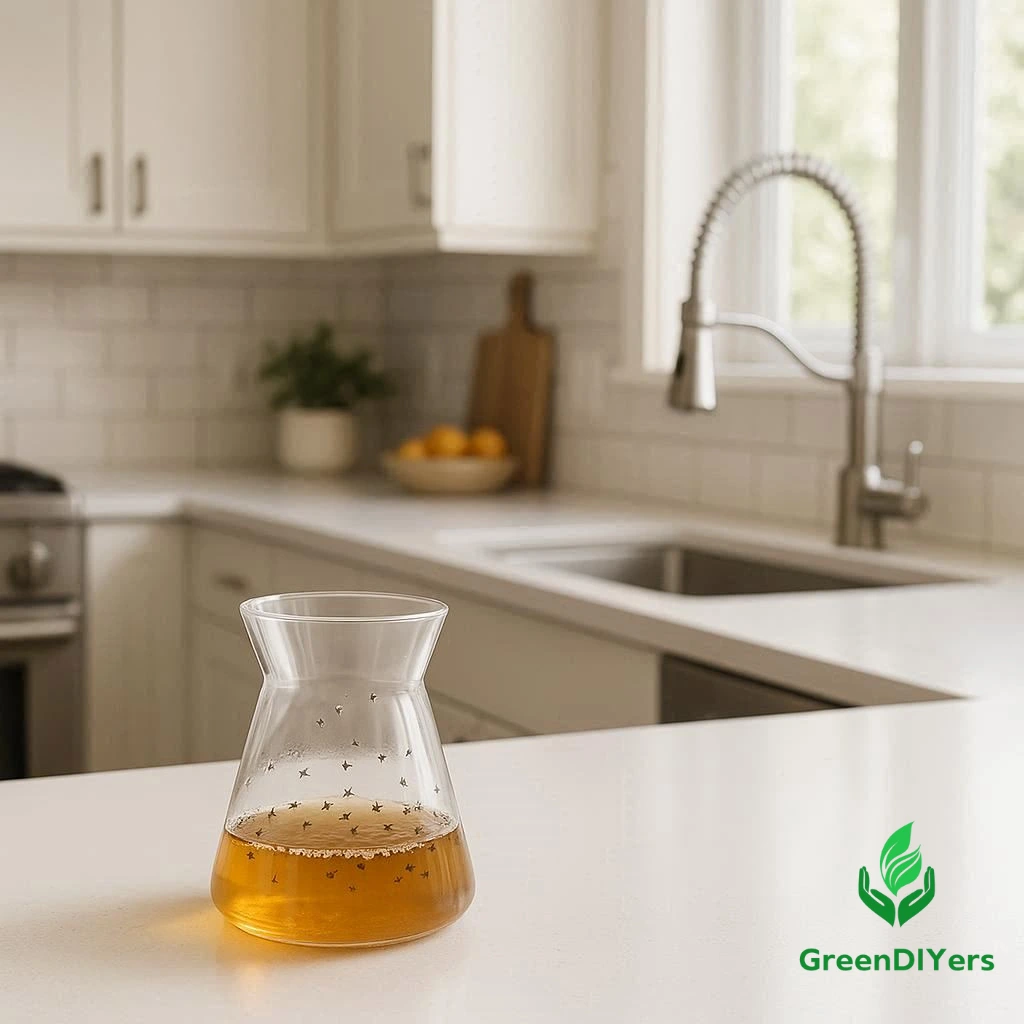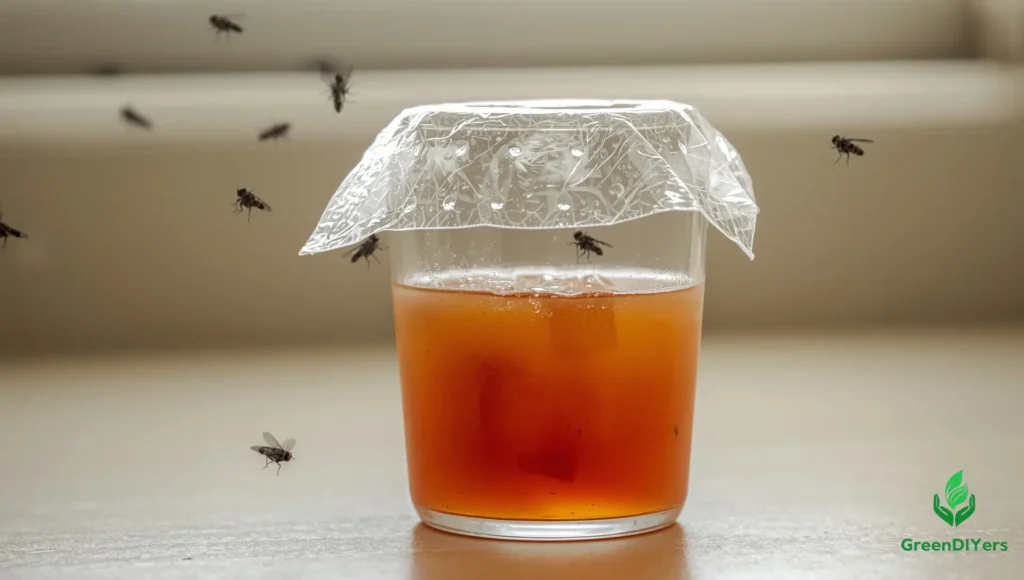Are you tired of those tiny, annoying gnats buzzing around your kitchen, bathroom, or houseplants? You’re definitely not alone! Nothing ruins a peaceful morning coffee quite like swatting at persistent little flies that seem to multiply overnight.
The good news? You don’t need expensive pest control services or harsh chemicals to win this battle. Creating an effective gnat trap diy solution is easier than you think, and you probably already have everything you need right in your kitchen pantry.
In this comprehensive guide, you’ll discover how to identify exactly what type of gnats you’re dealing with, create multiple types of homemade traps, and implement long-term prevention strategies. We’ll cover everything from fruit flies hovering over your banana bowl to fungus gnats living in your favorite houseplant’s soil.
Why go the DIY route? It’s cost-effective, safe for your family and pets, and provides immediate relief. Plus, there’s something deeply satisfying about solving a household problem with your own two hands and common household items.
Let’s dive in and reclaim your space from these uninvited guests!
Table of Contents

Section 1: Understanding Your Enemy: What Kind of Gnat Do You Have?
Before you start mixing up your gnat trap diy concoctions, it’s crucial to identify your specific gnat problem. Different types require different approaches, and using the wrong trap is like bringing a knife to a gunfight.
1.1 Fruit Flies
These tiny troublemakers are about 1/8 inch long with red eyes and tan bodies. You’ll typically find them hovering around ripe or rotting fruit, open wine bottles, garbage cans, and anywhere sugary or fermented liquids collect.
Fruit flies are attracted to the yeast and bacteria that develop on decaying organic matter. They can lay up to 500 eggs at a time, which explains why your small problem can become a major infestation seemingly overnight.
1.2 Fungus Gnats
Smaller and darker than fruit flies, fungus gnats are about 1/16 inch long with long legs and antennae. These guys love moist soil and are commonly found around houseplants, especially those that are overwatered.
Adult fungus gnats are mostly just annoying, but their larvae feed on plant roots and organic matter in soil, potentially damaging your beloved plants.
1.3 Drain Flies (Moth Flies)
Also called moth flies, these gnats are fuzzy with broad, hairy wings that give them a moth-like appearance. They’re typically found in bathrooms, around drains, and in areas with standing water.
Drain flies breed in the organic buildup inside pipes and drains, making them particularly stubborn to eliminate without addressing the source.
Quick Identification Test
Ask yourself these questions:
- Are they near fruit or food? Likely fruit flies.
- Are they around your plants or in the soil? Probably fungus gnats.
- Are they in the bathroom or near drains? Most likely drain flies.
Section 2: The Core DIY Gnat Traps: Step-by-Step Guides
Now for the fun part – creating your arsenal of homemade gnat traps! Each method targets specific gnat types and situations.
2.1 The Classic Apple Cider Vinegar (ACV) Trap
Best For: Fruit flies and general purpose use
Difficulty: Easy
Time: 5 minutes prep
Materials Needed:
- Apple cider vinegar (2-3 tablespoons)
- Liquid dish soap (2-3 drops)
- Small bowl or jar
- Plastic wrap
- Rubber band
- Toothpick
Step-by-Step Instructions:
- Pour apple cider vinegar into your bowl or jar
- Add 2-3 drops of dish soap and gently swirl to mix
- Cover the container with plastic wrap
- Secure with a rubber band
- Use a toothpick to poke 6-8 small holes in the plastic
How It Works: The vinegar attracts gnats with its fermented smell, while the dish soap breaks the surface tension, causing them to sink and drown.
Tips for Success: Place traps near problem areas, refresh every 3-4 days, and make sure holes are small enough to trap gnats but large enough for them to enter.
2.2 The Yeast & Sugar Trap
Best For: Fruit flies and fungus gnats
Difficulty: Easy
Time: 5 minutes prep
Materials Needed:
- Warm water (1/2 cup)
- Sugar (2 tablespoons)
- Dry yeast (1 packet or 1 teaspoon)
- Small bottle or jar
Step-by-Step Instructions:
- Mix warm water and sugar until sugar dissolves
- Add yeast and stir gently
- Pour mixture into bottle or jar
- Leave container uncovered
- Place in affected areas
How It Works: The yeast ferments the sugar, creating an irresistible alcoholic scent that lures gnats to their doom.
Tips for Success: This trap works best in warm environments. Replace every 5-7 days or when the mixture stops bubbling.
2.3 The Sticky Trap Method
Best For: Fungus gnats and general purpose
Difficulty: Easy
Time: 2 minutes setup
Materials Needed:
- Yellow sticky traps (store-bought or homemade)
- For DIY version: cardboard, petroleum jelly, yellow paint or marker
Step-by-Step Instructions:
- If making your own, paint cardboard yellow and let dry
- Coat with a thin layer of petroleum jelly
- Place traps near affected plants or areas
- Replace when covered with gnats or weekly
How It Works: Gnats are attracted to the color yellow, thinking it’s a flower or ripe fruit, then get stuck on the adhesive surface.
Tips for Success: Position traps just above soil level for fungus gnats. Don’t use too much petroleum jelly, as it can drip.
2.4 The Rotting Fruit/Veggie Trap
Best For: Fruit flies
Difficulty: Easy
Time: 3 minutes prep
Materials Needed:
- Overripe fruit or vegetables (banana peel works great)
- Bowl or jar
- Plastic wrap
- Toothpick
Step-by-Step Instructions:
- Place overripe fruit in container
- Cover tightly with plastic wrap
- Poke small holes with toothpick
- Set near fruit fly activity
How It Works: Uses the gnats’ natural attraction to decaying fruit as bait, trapping them inside the container.
Tips for Success: Change fruit every 2-3 days. This method can attract more gnats initially, so be patient as the population decreases.
2.5 The Drain Fly Trap
Best For: Drain flies specifically
Difficulty: Easy
Time: 10 minutes active time
Materials Needed:
- Hot water
- Baking soda (1/2 cup)
- White vinegar (1 cup)
Step-by-Step Instructions:
- Pour hot water down the drain to clear loose debris
- Pour baking soda down the drain
- Follow with white vinegar
- Wait 15 minutes, then flush with hot water again
- Repeat daily for a week
How It Works: The chemical reaction breaks down organic buildup where drain flies breed, eliminating their habitat.
Tips for Success: This addresses the source, not just the symptom. Be consistent with daily treatments for best results.

Section 3: Advanced Gnat Control & Prevention Strategies
Traps are great for immediate relief, but long-term success requires eliminating what attracts gnats in the first place.
3.1 Eliminating Breeding Grounds
The most effective gnat trap diy strategy is prevention. Remove what gnats love:
- Overwatered plants: Allow soil to dry between waterings
- Ripe fruit: Store fruit in the refrigerator or sealed containers
- Dirty drains: Clean regularly with baking soda and vinegar
- Food spills: Wipe down surfaces daily
- Leaky pipes: Fix moisture problems promptly
3.2 Plant-Specific Solutions
For houseplant enthusiasts dealing with fungus gnats:
- Let the top inch of soil dry out completely between waterings
- Add a layer of sand or decorative pebbles to the soil surface
- Use neem oil spray as a natural deterrent
- Consider beneficial nematodes for severe soil infestations
3.3 Kitchen & Home Hygiene
Maintain a gnat-unfriendly environment:
- Empty trash cans regularly, especially in warm weather
- Wipe down counters and clean up spills immediately
- Store ripe produce in sealed containers
- Run the garbage disposal regularly and keep it clean
3.4 When to Call a Pro
If you’ve tried multiple gnat trap diy methods and prevention strategies for several weeks without success, it might be time for professional help. Large infestations or recurring problems could indicate a more serious underlying issue.
Section 4: Troubleshooting Your Gnat Traps
Trap not working as expected? Here are common issues and solutions:
Wrong gnat type for the trap: Review the identification section and match your trap to your specific gnat problem.
Poor trap placement: Move traps closer to where you see the most activity. For fungus gnats, place traps on or near soil. For fruit flies, position near fruit or garbage areas.
Old or stale trap: Refresh traps regularly. Most need replacement every 3-7 days to remain effective.
Overwhelming infestation: Use multiple trap types simultaneously and focus heavily on eliminating breeding sources.
Conclusion
Creating effective DIY gnat traps doesn’t require special skills or expensive materials – just some common household ingredients and a little patience. Whether you’re dealing with fruit flies in your kitchen, fungus gnats in your houseplants, or drain flies in your bathroom, there’s a gnat trap diy solution that will work for your situation.
Remember, the key to long-term success isn’t just trapping the gnats you can see, but eliminating the conditions that attract them in the first place. By combining the right traps with proper prevention strategies, you can reclaim your space from these tiny invaders.
Don’t let gnats control your home comfort any longer. Try these methods and see which ones work best for your specific situation. Have you had success with any of these techniques? I’d love to hear about your gnat-fighting victories!
Ready to tackle other household pests naturally? Check out our related guides on natural pest control methods and maintaining a chemical-free home.



